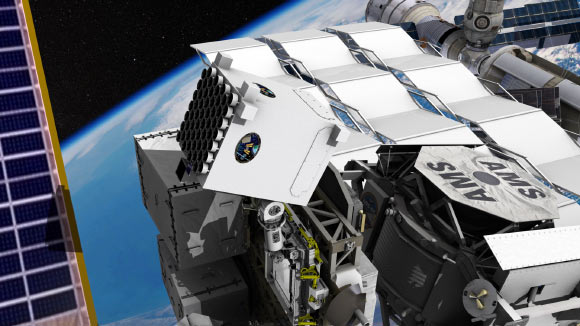NASA engineers have successfully demonstrated X-ray navigation in space — a capability that could revolutionize NASA’s ability in the future to pilot robotic spacecraft to the far reaches of our Solar System and beyond.
The demonstration was carried out by NASA in an experiment called the Station Explorer for X-ray Timing and Navigation Technology (SEXTANT).
It showed that millisecond pulsars could be used to accurately determine the location of an object moving at thousands of miles per hour in space — similar to how GPS provides positioning, navigation, and timing services to users on Earth.
“This demonstration is a breakthrough for future deep space exploration. As the first to demonstrate X-ray navigation fully autonomously and in real-time in space, we are now leading the way,” said SEXTANT project manager Jason Mitchell, of NASA’s Goddard Space Flight Center.
“This technology provides a new option for deep space navigation that could work in concert with existing spacecraft-based radio and optical systems.”
The SEXTANT demonstration took advantage of the 52 X-ray telescopes and silicon-drift detectors that make up NASA’s Neutron-star Interior Composition Explorer (NICER).
Since its successful deployment as an external attached payload on the International Space Station in June 2017, it has trained its optics on some of the most unusual objects in the Universe.
“We’re doing very cool science and using the space station as a platform to execute that science, which in turn enables X-ray navigation. The technology will help humanity navigate and explore our Galaxy,” said NICER principal investigator Keith Gendreau, also from NASA’s Goddard Space Flight Center.
“Although NICER is studying all types of neutron stars, the SEXTANT experiment is focused on observations of pulsars.”
“Radiation emanating from their powerful magnetic fields is swept around much like a lighthouse. The narrow beams are seen as flashes of light when they sweep across our line of sight. With these predictable pulsations, pulsars can provide high-precision timing information similar to the atomic-clock signals supplied through the GPS system.”
In the SEXTANT demonstration in November 2017, the researchers selected four millisecond pulsars (J0218+4232, B1821-24, J0030+0451, and J0437-4715) and directed NICER to orient itself so it could detect X-rays within their sweeping beams of light.
The pulsars used by SEXTANT are so stable that their pulse arrival times can be predicted to accuracies of microseconds for years into the future.
During the two-day experiment, the payload generated 78 measurements to get timing data, which the SEXTANT experiment fed into its specially developed onboard algorithms to autonomously stitch together a navigational solution that revealed the location of NICER in its orbit around Earth as a space station payload.
The team compared that solution against location data gathered by NICER’s onboard GPS receiver.
“For the onboard measurements to be meaningful, we needed to develop a model that predicted the arrival times using ground-based observations provided by our collaborators at radio telescopes around the world,” said Paul Ray, a SEXTANT co-investigator with the U.S. Naval Research Laboratory.
“The difference between the measurement and the model prediction is what gives us our navigation information.”
The goal was to demonstrate that the system could locate NICER within a 10-mile radius as the space station sped around Earth at slightly more than 17,500 mph.
“Within eight hours of starting the experiment on November 9, the system converged on a location within the targeted range of 10 miles and remained well below that threshold for the rest of the experiment,” Mitchell said.
In fact, ‘a good portion’ of the data showed positions that were accurate to within three miles.
“This was much faster than the two weeks we allotted for the experiment,” said SEXTANT system architect Luke Winternitz, also from NASA’s Goddard Space Flight Center.
“We had indications that our system would work, but the weekend experiment finally demonstrated the system’s ability to work autonomously.”
“Although the ubiquitously used GPS system is accurate to within a few feet for Earth-bound users, this level of accuracy is not necessary when navigating to the far reaches of our Solar System where distances between objects measure in the millions of miles. In deep space, we hope to reach accuracies in the hundreds of feet,” Mitchell said.
“This successful demonstration firmly establishes the viability of X-ray pulsar navigation as a new autonomous navigation capability,” he added. “We have shown that a mature version of this technology could enhance deep-space exploration anywhere within the Solar System and beyond. It is an awesome technology first.”
The team presented its results in January 2018 at the 231st Meeting of the American Astronomical Society in Washington, D.C.
Source: Sci-News

































Leave a Comment
You must be logged in to post a comment.